Taking Measure
Just a Standard Blog
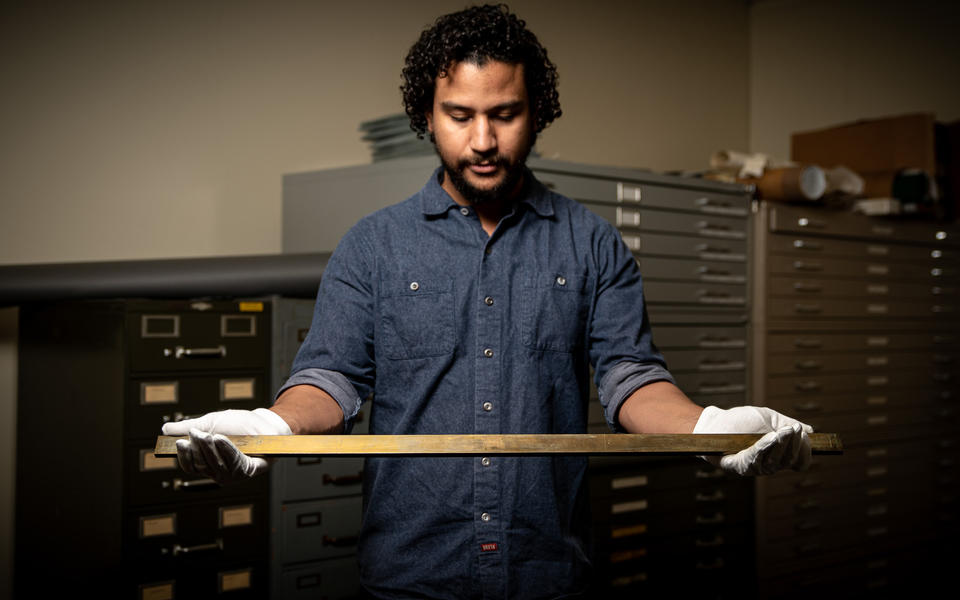
Me with one of the Mexican varas held in the NIST archives.
By the 1850s, the United States had annexed nearly all of what are now its southwestern states from Mexico, and with the region, its peoples. Though the U.S. government considered this land relatively “unexplored,” it had been dotted with Native American settlements and Mexican haciendas for centuries. The word hacienda was also the name of a unit of measure. Each hacienda was 5 sitios, and each sitio 5,000 square varas (also equivalent to a square Spanish league). The people lived in these dimensions, intuitively understanding distance and size like la palma de la mano (the back of their hand).
Earlier this year, I found myself thinking about an appropriate way to commemorate Hispanic Heritage Month at the National Institute of Standards and Technology (NIST). In my search for ideas, I approached the NIST Museum for a piece of NIST history with a link to Hispanic heritage. As I spoke with research librarian Keith Martin, he said: “We have an artifact of which we only have brief, but intriguing, details … come take a look.” This is how I was introduced to the Mexican vara; I immediately wanted to learn more.
To understand the relevance of the vara in the history of metrology and Hispanic culture, we need to look at its origins. By the mid-15th century, nearly every Spanish province had its own standard length. Then an association of foresters called the “Hermandad de los Pinares” (the Brotherhood of the Pine Forests) from the city of Burgos in northern Spain decided to develop a standard unit of length that would allow them to accurately survey the forests where they harvested timber. Their standard was known as “La Vara de Burgos.” The timber market made the members of the Hermandad very wealthy, and “la vara,” from the Latin virga, which means “rod,” gained widespread acceptance throughout the kingdom. Phillip II declared it Spain’s official standard of length in 1568. By today’s standards, that official vara measures 0.8359 meters (32.909 inches). Traditionally, the physical standard was made of heavy oak and was divided by brass studs into four even sections. Each section was subdivided into units approximately equivalent to the width of two fingers.
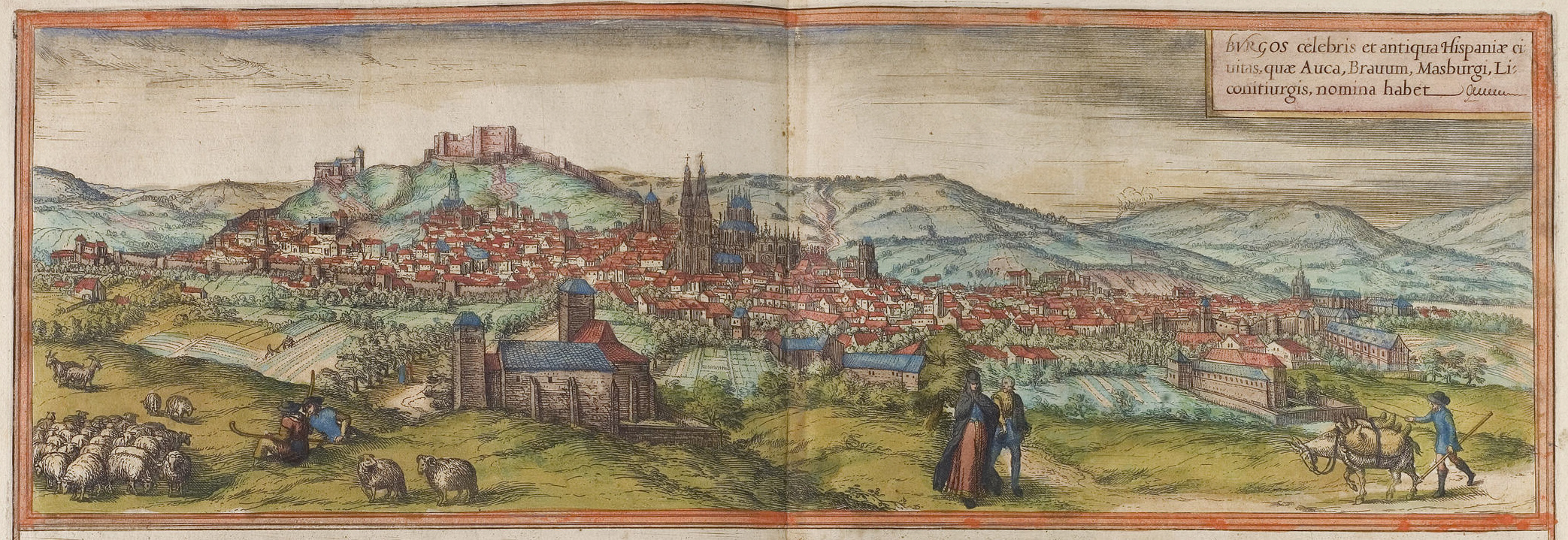
After the conquest of the Americas, the Spanish imposed Andalusian and Castilian measures such as brazas (fathoms), codos (cubits) and palmos (palms) that were adopted by the indigenous peoples with ease, as the units were based on the dimensions of the body, much like their own measures. As it was adopted across Spain, the “Vara de Burgos” likewise became a standard in New Spain. The vara was used to measure not only land, but also the architecture of colonial New Mexico and California. The Catholic Church has historic documents in which buildings’ dimensions are recorded in varas. In colonial California, the vara standard was etched on the Alcalde’s (Mayor’s) Staff of Office, known as the “Barra de la Autoridad.” The vara was used in all of New Spain and was the standard unit of length until the United States annexed all or part of Texas, California, Nevada, Utah, and Colorado from Mexico as a result of the Treaty of Guadalupe Hidalgo in 1848.
The arrival of the American system of measurement caused confusion and conflict. The American system relied on a square grid for the division of land, while the Spanish used irregular distributions of land that often corresponded with social and political values. For example, closer to a seaport, or for a person of high rank, a vara could reflect the landholder’s importance by being slightly longer. The Americans wanted their property demarcated equally, inch by inch.
In December 1888, George Julian, surveyor general of the Territory of New Mexico, declared that 90% of the land entries in the territory were fraudulent due to nonstandard measurements. To new arrivals, the variability of the vara would have seemed capricious and frustrating; on top of having sociopolitical dimensions, the Californian, Texan and Arizonan varas were slightly different. For an agrarian society, inconsistently measured land was no small matter. For decades, the clash over land, who owned it, and how to measure it accurately continued. The vara eventually grew so contentious that the U.S. Supreme Court heard cases disputing land with Spanish titles in American territories. The court eventually ruled in 1870 that all varas would be pegged to the Texan vara standard (0.846582 meter or 33.33 inches) for conversion purposes, and many Spanish-American residents lost land to Anglo settlers.
This brings us back to the Mexican varas in the NIST Museum. The Mexican vara is a direct descendant of the Vara de Burgos. The first official Mexican varas obtained by the United States government were acquired by Maj. William Turnbull of the Army Corps of Engineers when the U.S. occupied Mexico City in 1847. These varas were originally intended to be distributed to several Mexican states and were being held in Mexico City during the Mexican-American War. Today, four of these varas are part of the NIST Museum collection. One of the four was presented to the United States Coast and Geodetic Survey in 1847 by the Corps for analysis. Upon its arrival in the United States, the Mexican vara was determined to measure 32.9682 inches at 58.7 degrees Fahrenheit.
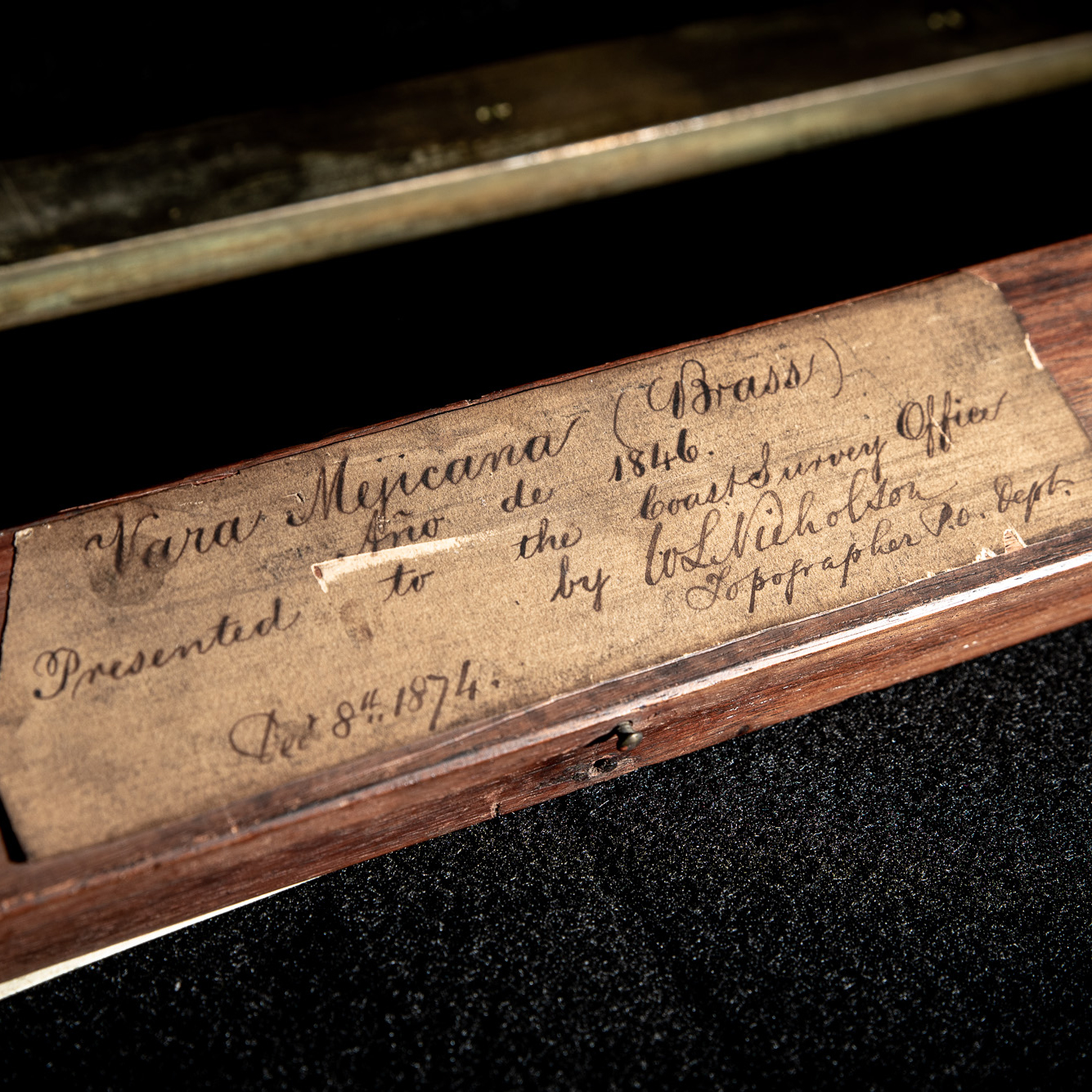
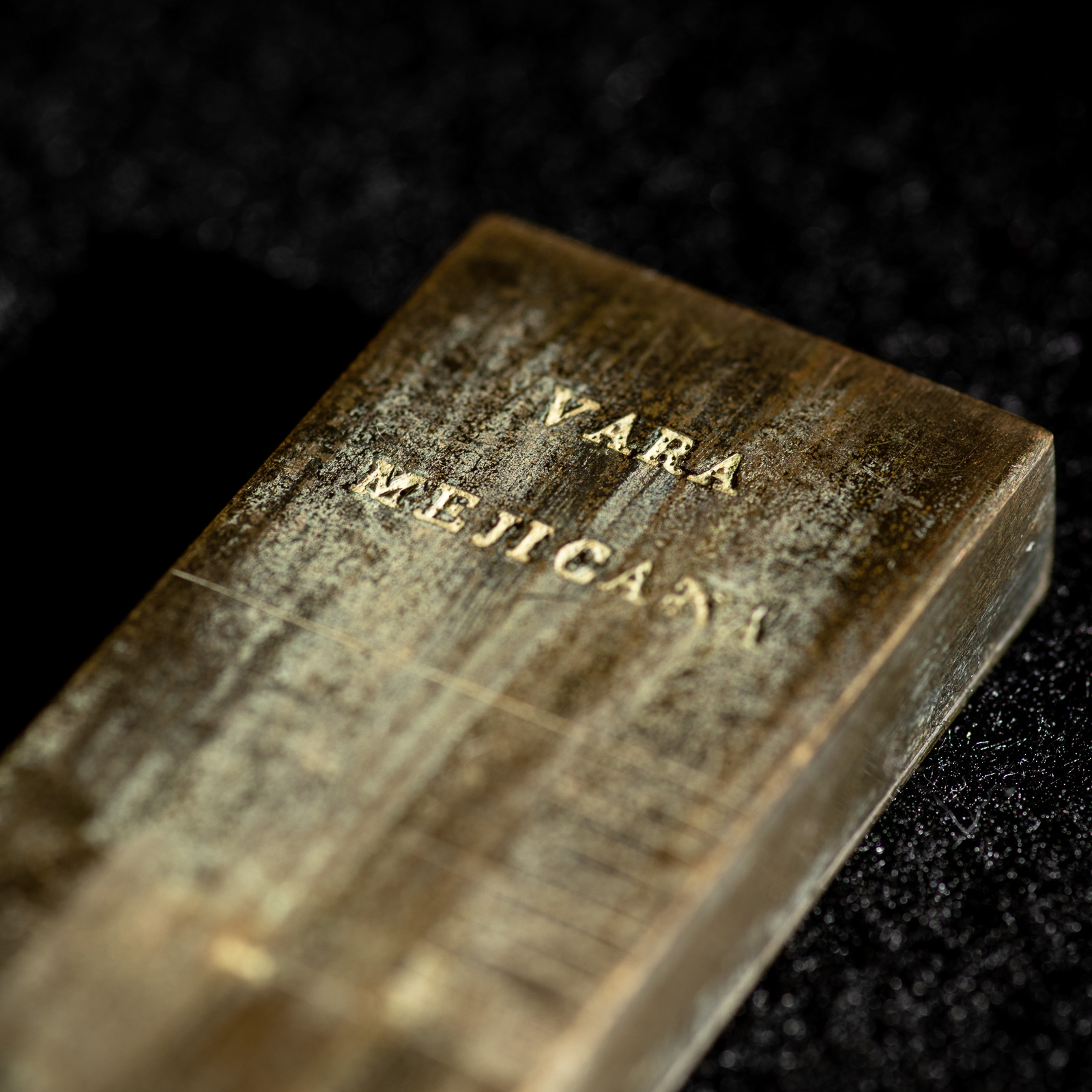
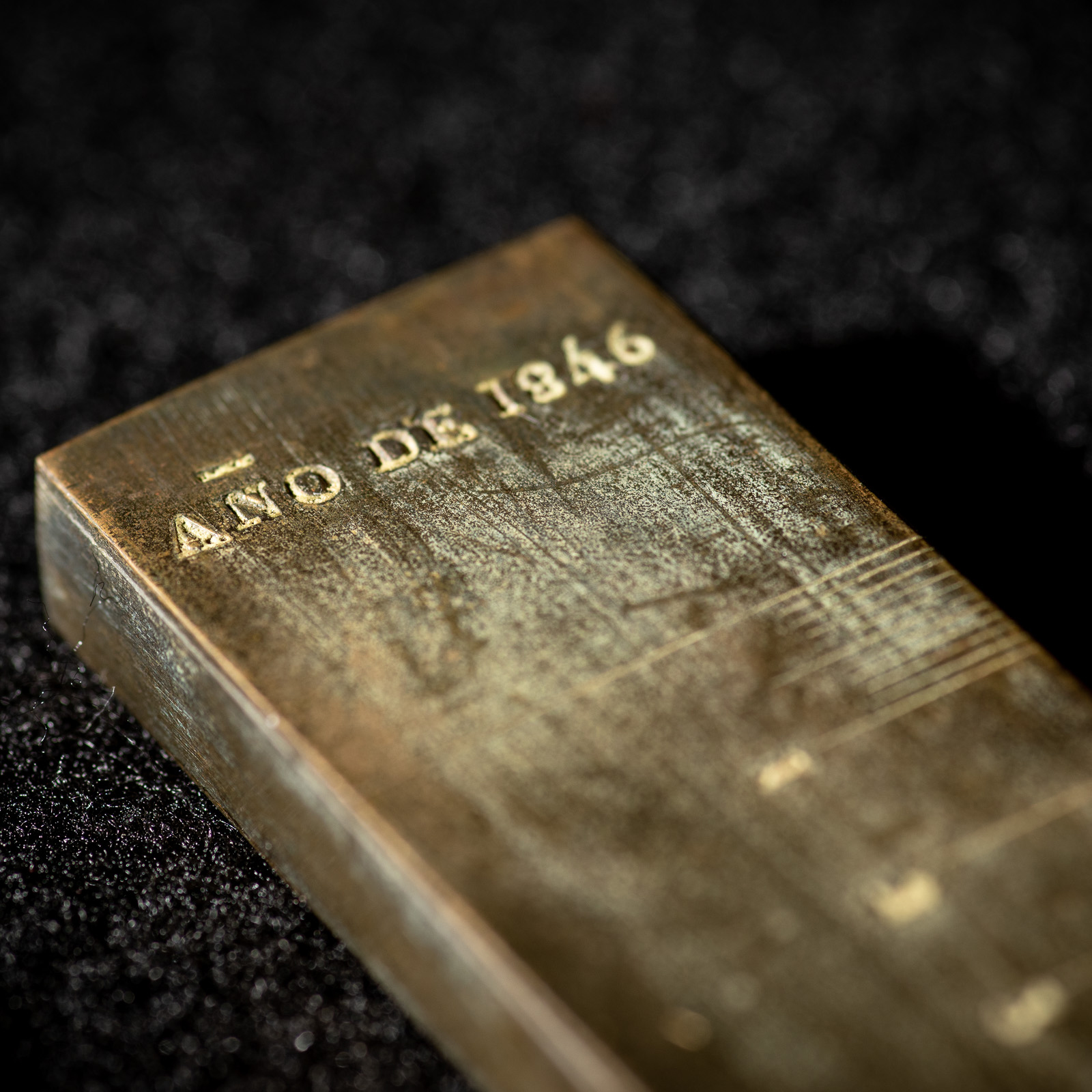
All four Mexican varas in the NIST collection are brass-plated iron, presumably to protect against corrosion, and have markings on both sides. One end of the vara is engraved with the seal of Mexico, a golden eagle perched on a cactus while devouring a rattlesnake; the other end reads the year the rods were manufactured, “año 1846.” The other side reads “Vara Mejicana” and “Por Orden Suprema” (by supreme order). Mexican varas are graduated in tenths on one side. One of the tenths is subdivided into 10 centesimos (hundredths), and one centesimo is further subdivided into 10 thousandths. The other side shows division of the vara into one-half, one-third, one-fourth, one-sixth and one-eighth. The one-sixth section is divided into “pulgadas” (Spanish inches). Pulgar is the word for “thumb” in Spanish, and thus the inch roughly corresponds to the length of the first thumb bone. Interestingly, these inches are slightly smaller than imperial inches at approximately 23.26 millimeters (0.92 inch).
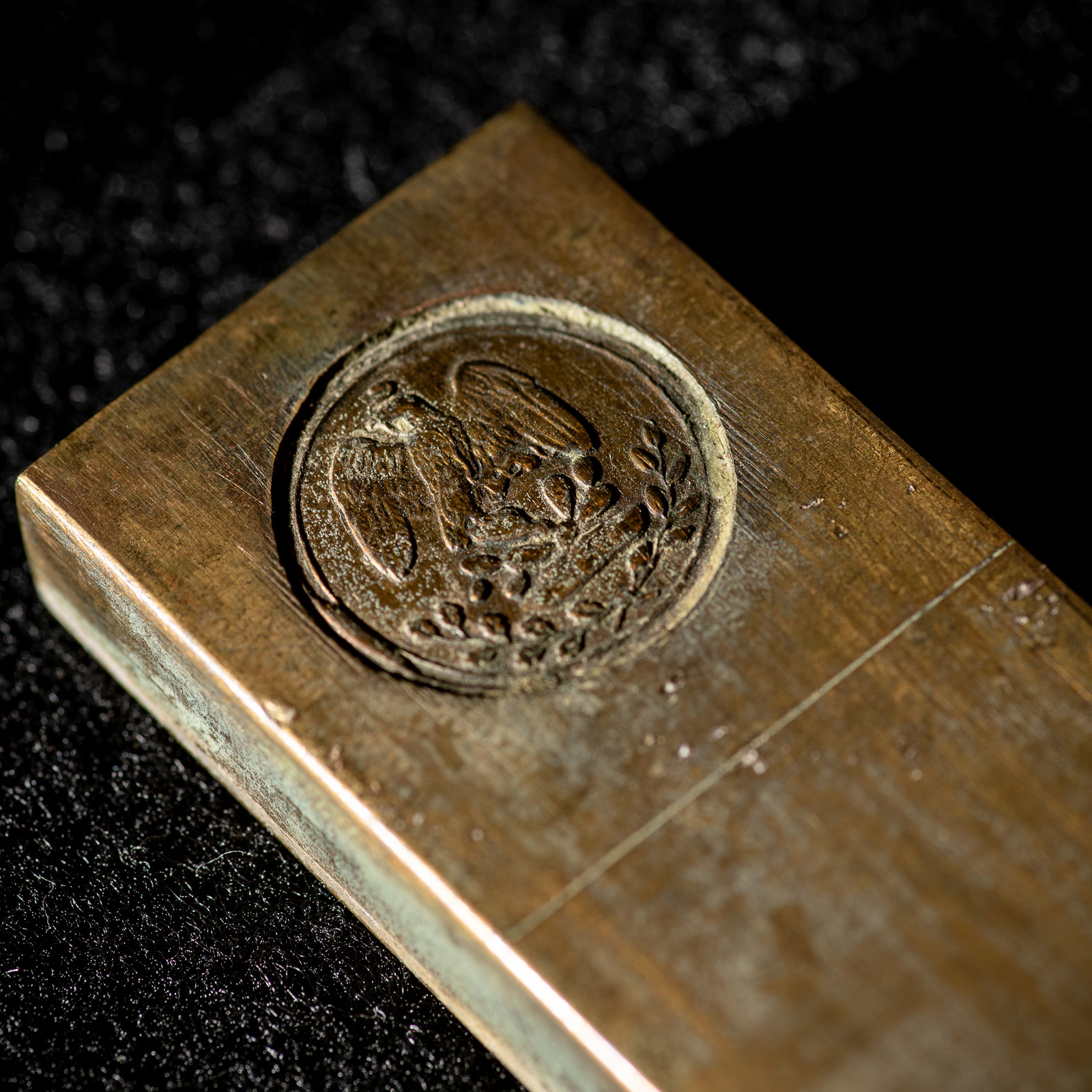
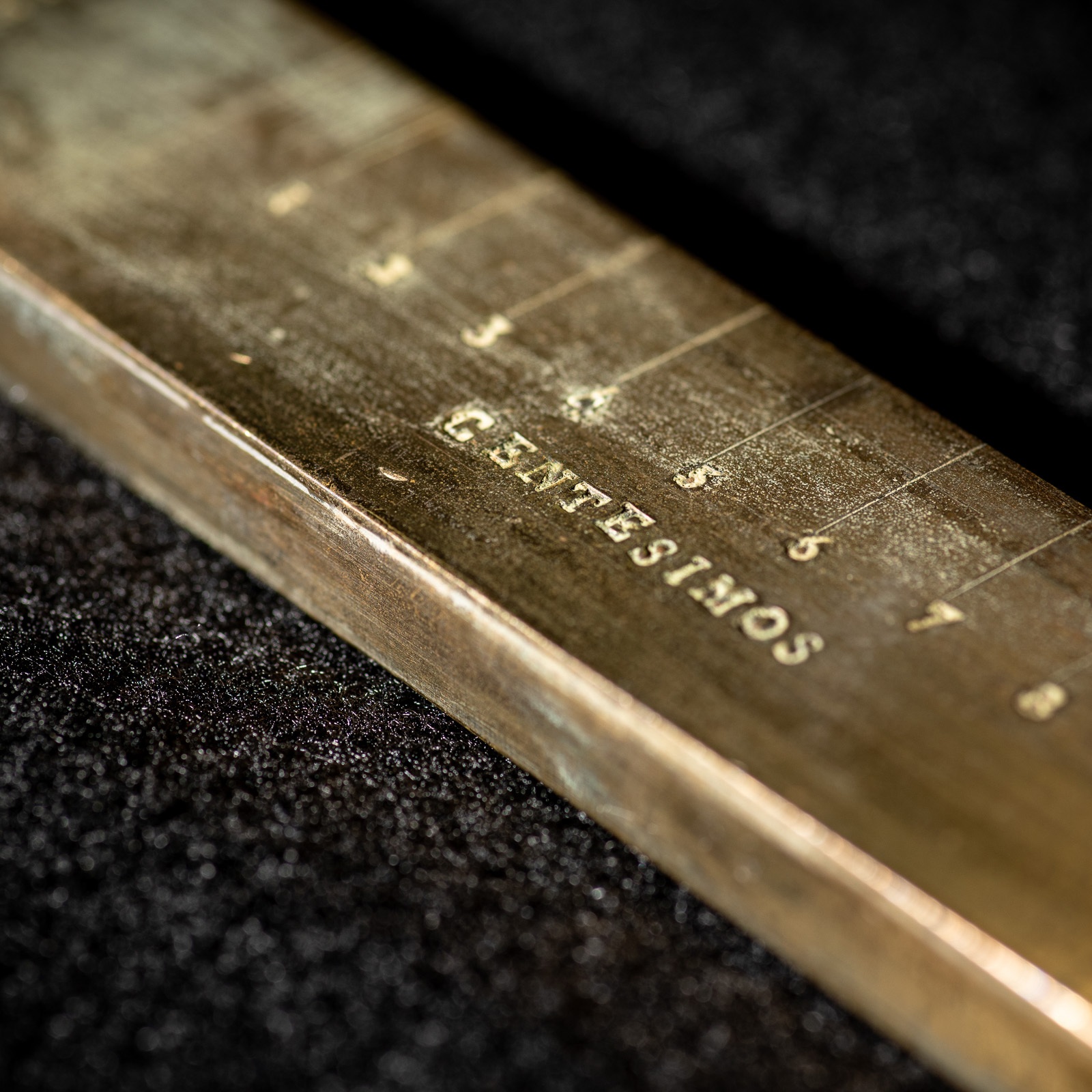
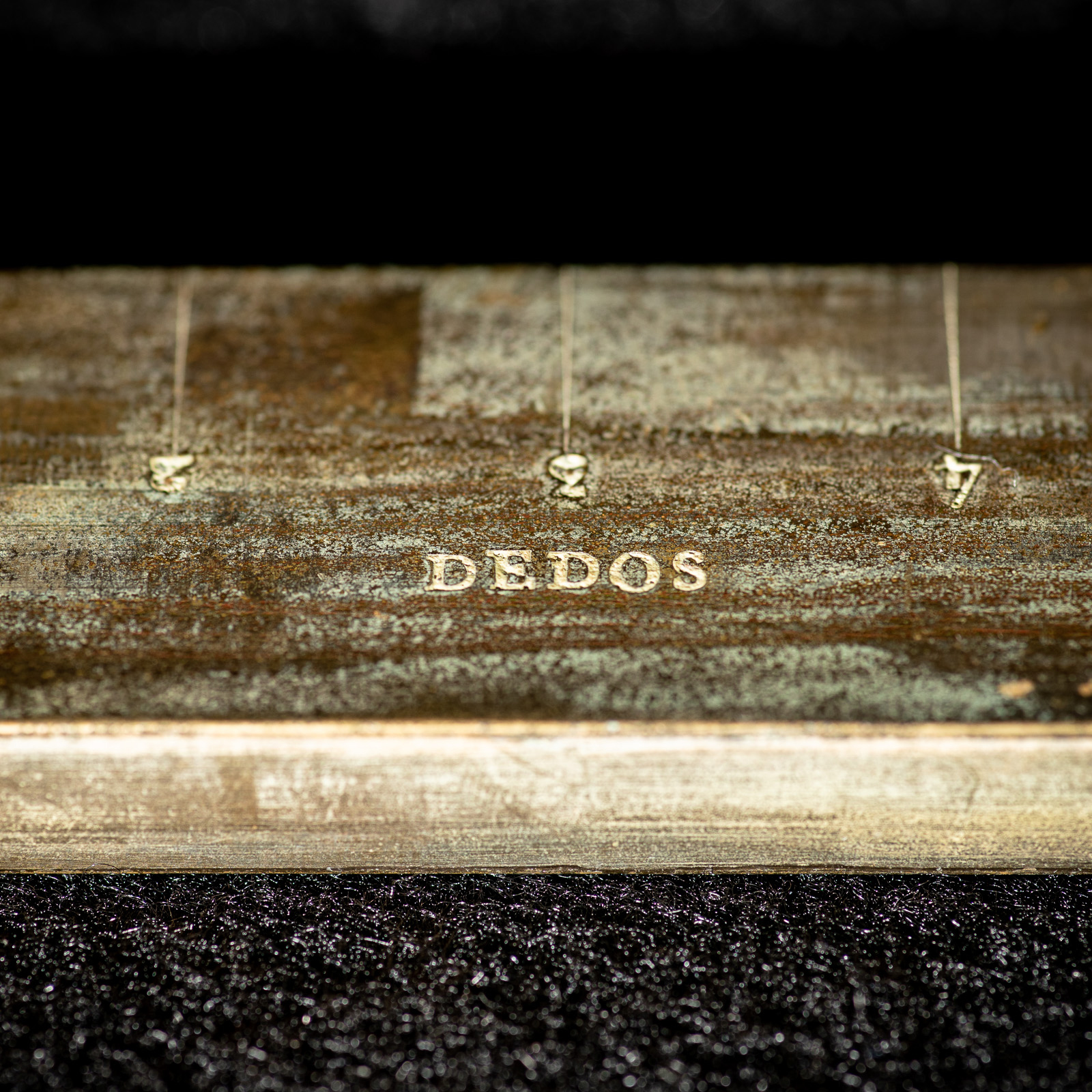
Another finger-derived gradation captured my attention: The varas are also divided into “dedos,” a unit I had never heard of before, which means “fingers.” A dedo is a “standard fingerwidth”; one vara equals 48 dedos. This means that a dedo is approximately 17.45 millimeters (0.69 inch). It is not clear if this unit is of Spanish origin, pre-Columbian origin, or a combination of both. It was common for pre-Columbian peoples to use anthropometric units.
I can now say things like “I’m approximately 2.15 varas tall,” but this exercise also opened my eyes to something else. I can empathize with the ranchers in the Mexican Southwest regarding their vara and the transition to the standards of the American government. Despite conducting my undergraduate studies, Ph.D. and postdoctoral research in the U.S., as a nonnative English speaker, I still cannot help counting in Spanish or measuring in grams when I cook. I can imagine what changing standards might feel like, even if I cannot imagine the consequences doing so would have on my life. I consider myself lucky because being part of NIST has allowed me to come in close contact with artifacts that had such direct connection to my Spanish forebears, and later to American history. It has been quite a unique, educational and surreal experience.
About the author
Related Posts
Comments
nice
thank you for such and interesting report on an important topic overlooked in our US history
Nice. When I arrived in Costa Rica the first time in 1988, I was confronted with varas instead of yards or meters, and manzanas instead of hectares and acres. So I had to research these. And I found that the vara varied from country to country. Your article is very explanatory. This site tabulates the differences between varas of Latin American countries. All the best -- George Humphries in Costa Rica https://www.convert-me.com/en/convert/length/varacr.html?u=varacr&v=1
Even the varas are bigger in Texas.
A splendid article because my Texas property's original deed has the vara as the unit of distance.
Thank you so much for this information about the Spanish Vara.
I have a website for the Nicaragua Railroad in Central America, and an article written in 1947 is using the Vara measurement to explain the beginnings of the railroad in the 1877 upwards.
I never understood the vara measurement until now and the history of it.
Thank you so much for this information about the Spanish Vara.
I have a website for the Nicaragua Railroad in Central America, and an article written in 1947 is using the Vara measurement to explain the beginnings of the railroad in the 1877 upwards.
I never understood the vara measurement and the history of it until now.
Thank you for this article. My maiden name is Vara and my family resides in Laredo, Texas. I wonder how my name connects to it!
Eleanor, the Oxford Dictionary of Family Names says your ancestors could have been a keeper of animals (using the vara as a shepherd stick), an official in charge of weights (from the measuring sense), someone in office (the rod of authority), or named for one of the places in Spain called Vara. Incidentally, Laredo's inner city blocks are also laid out according to varas!
Argentina is officially metric since 1863, but I've seen ads "Parcel of land for sale, 1,200 square varas" from as late as the 1930s. People sticking to old traditions during a long time? Not exactly. The vara of Buenos Aires (in other provinces the values were slightly different) measured 0.866 meters, so a square vara was about 0.75 square meters, and 1,200 square varas roughly 900 square meters. But of course "1,200" seemed larger than "900" (it's like psychological prices: $ 9.99 looks cheaper than 10 dollars). I suppose that if/when the United States goes metric, for common people a ranch of 405 hectares will look smaller than one of 1,000 acres, although mathematically it's the same.
Thanks very cool article as I was in Nicaragua trying to figure out what a VARA is. I am French, so borderline with Spain, and did not even know this was originating from Europe!
Gracias!
Por décadas en la regiones suburbanas de República Dominicana, se utilizó estas medidas de "varas", específicamente en medidas de terrenos e incluso excavaciones. Ya para la dedada de los 60's se inicio la medida de metros, por ser más exactos. Era común que los pueblos precolombinos usaran unidades antropométricas y de ahí surge, la vara. En 1700, las medidas estándar en España, aunque ya existían ciertas unidades de medida comunes, no estaban completamente estandarizadas como lo están hoy en día. La vara, el pie, el codo, el palmo y otras unidades eran utilizadas, pero sus longitudes podían variar según la región o incluso la profesión. El inicio de esas medidas es europeo.
Google Translation of this comment:
For decades in suburban areas of the Dominican Republic, these "varas" measurements were used, specifically for land measurements and even excavations. By the 1960s, the meter measurement was introduced, as it was more accurate. It was common for pre-Columbian peoples to use anthropometric units, and from there, the vara (yard) emerged. In 1700, standard measurements in Spain, although certain common units of measurement already existed, were not fully standardized as they are today. The vara (yard), foot, cubit, palm, and other units were used, but their lengths could vary by region or even profession. These measurements originated in Europe.






excellent story! I have always been intrigued by the skill of craftsman,. "One of the tenths is subdivided into 10 centesimos (hundredths), and one centesimo is further subdivided into 10 thousandths." Wondering HOW they did this? I can't image how one would do this without modern tools.
Thanks and have a FUN day!